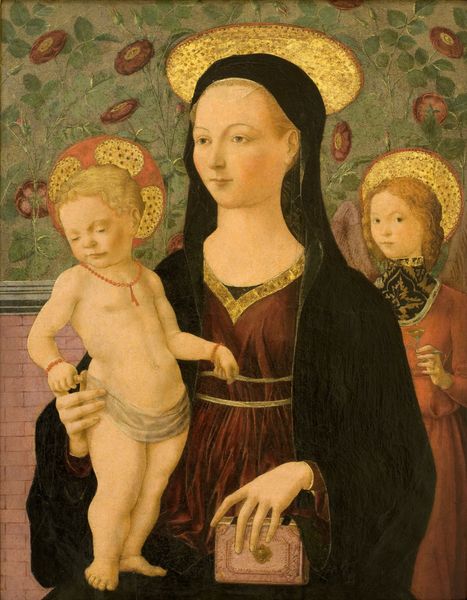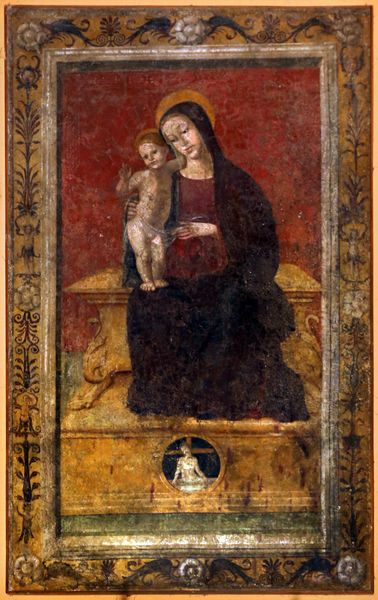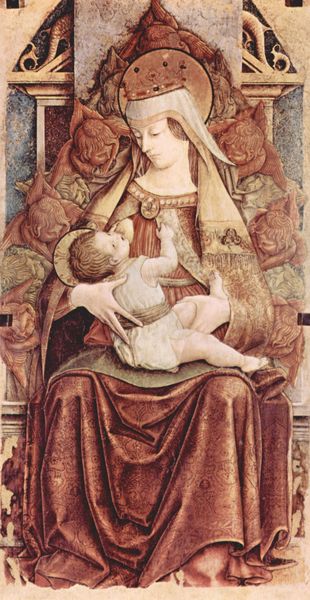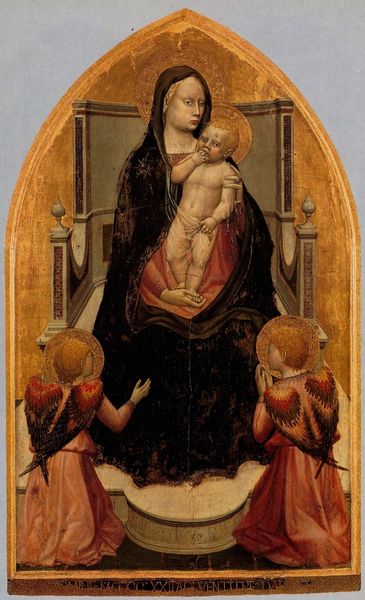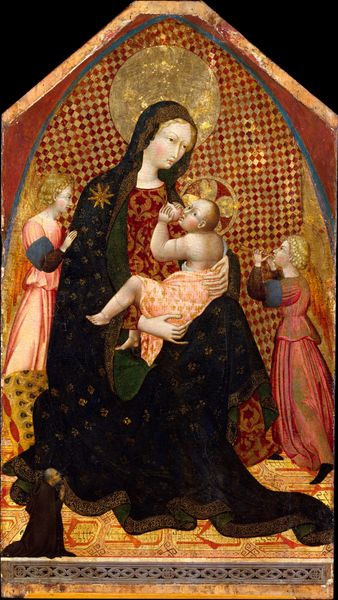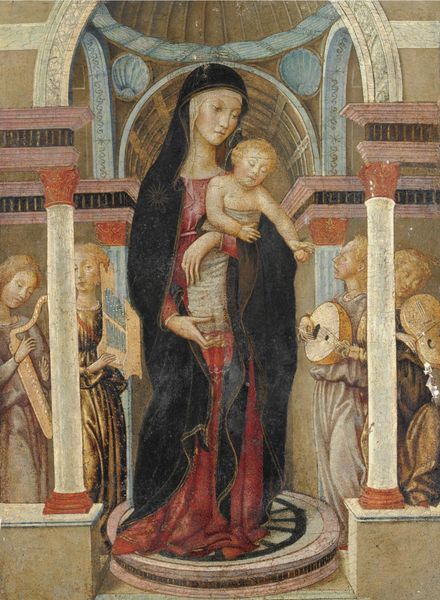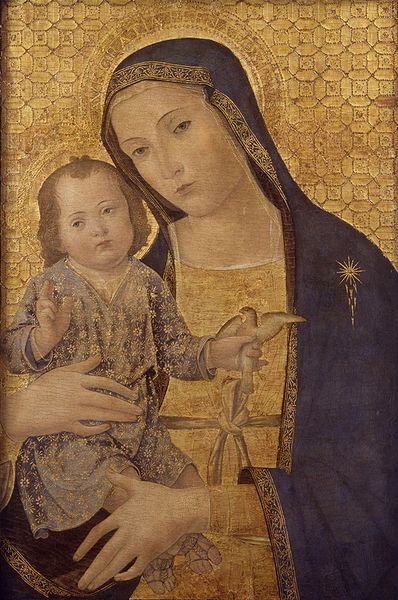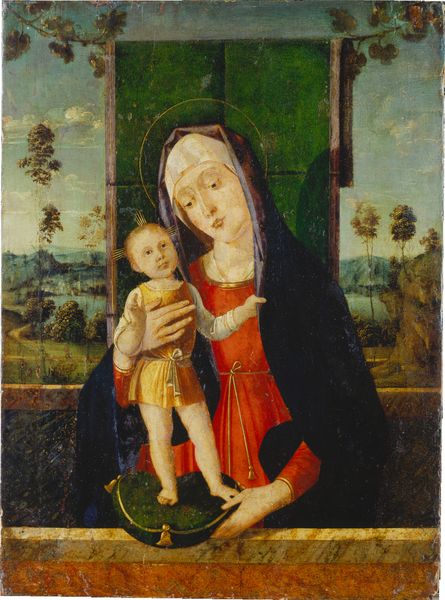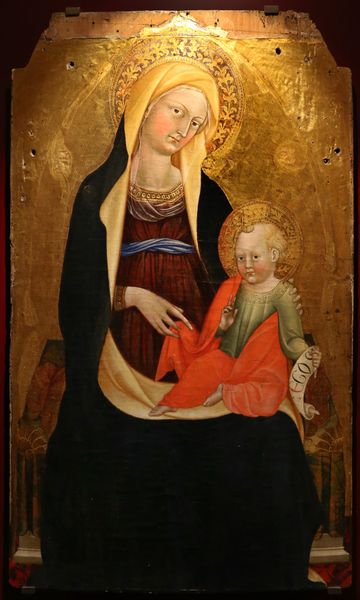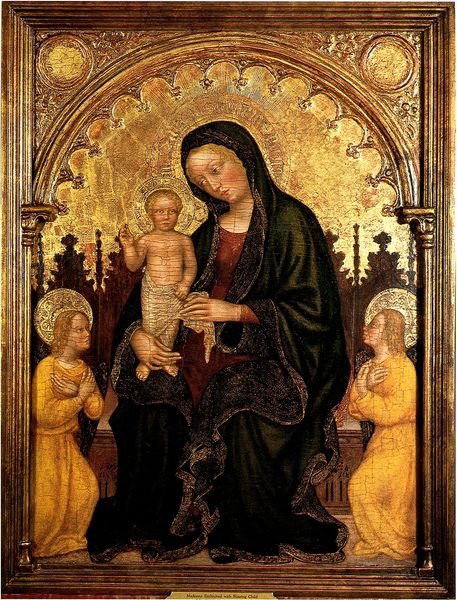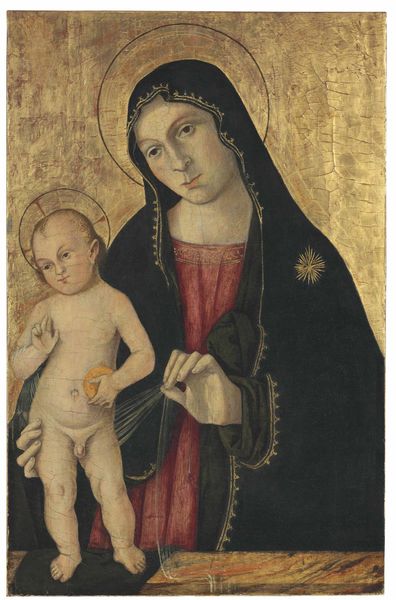
painting, oil-paint
#
portrait
#
painting
#
oil-paint
#
painted
#
figuration
#
oil painting
#
history-painting
#
academic-art
#
italian-renaissance
Copyright: Public domain
Curator: We’re looking at “Madonna del Latte” by Antoniazzo Romano, created around 1464. It’s an oil painting that presents the Virgin Mary breastfeeding the infant Jesus. Curator: Immediately, I'm drawn to the heavy drapery. The material almost seems to overwhelm the figures. It has a tactile, weighty quality, which contradicts the ethereality usually associated with religious painting. Curator: Absolutely. Let’s consider this within its socio-historical framework. The image of the nursing Madonna, or Madonna Lactans, becomes quite prominent during the Renaissance. What does it signify when framed within societal expectations of motherhood? It becomes more than just a depiction; it embodies a certain ideal of womanhood centered on care and maternal devotion. Curator: And it’s interesting to note the tension here, right? The expensive-looking fabric of her robe, that architectural backdrop… these denote status and wealth, clashing with the raw, primal act of breastfeeding. This is also clearly made for display in someone's private collection, so let's think about this as an object for both contemplation and status. How might this inform understandings of gender? Curator: Precisely. Further, it creates this visual and ideological complexity by representing this very intimate act within such a formal setting. Considering questions about who the patron of this artwork was is paramount: to what extent were patriarchal standards enforced when portraying Mary and motherhood? Were there conflicting ideals within that standard? Curator: Also, oil paint, while increasingly popular in this period, offered artists the chance to blend pigment smoothly and portray texture faithfully. How would a fresco done with the tempera have handled light differently, changing our perception? The act of devotion intersects directly with commerce in material culture. The presence of the male kneeling figure there in the lower-right of the picture further indicates someone associated with its patronage, wouldn't you agree? Curator: Undoubtedly. His inclusion emphasizes the donor’s active participation in the scene. By analyzing historical and social cues that dictated the value of women’s identity within those patriarchal systems, we confront difficult, but vital, insights into the creation of religious art, and what social function the images upheld. Curator: Yes, taking the opportunity to appreciate how Antoniazzo Roman utilized emergent material processes and formal elements, reveals deeper insights. It provides space to examine both devotion and the material foundations upon which belief often rests.
